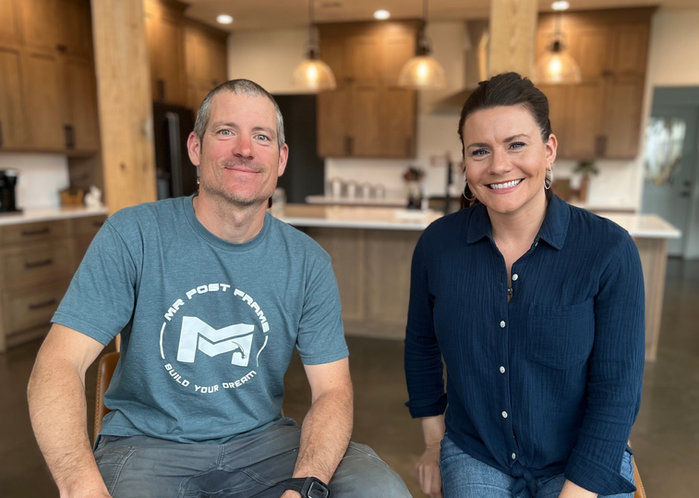Hey, folks! Welcome back to the continuation of my storm shelter project. After the first video, I received a lot of feedback and questions, so before we dive into the construction details, I want to address some concerns and clarify a few things.

Firstly, I want to emphasize that when I mentioned "storm shelter," I should have been more specific. This space isn't a traditional storm shelter per se, but rather a safe haven to seek shelter during storms and tornadoes. Living in the Midwest, where severe weather is a reality, having a secure space is crucial for my family's safety. The goal is to create a robust structure that can withstand high winds and provide peace of mind during storms.
I understand some questioned the absence of a seal along the bottom. The reason for this is that the entire shelter is encapsulated within the garage, and I'm not concerned about air infiltration. Additionally, future plans include spray foaming for added insulation and sealing.
To address potential concerns about the windows, I plan to build sliding doors for protection, and the six-foot window wells offer an extra layer of security. It's all part of a comprehensive design to ensure safety and functionality.

Now, let's get back to the construction progress. In the first part, I framed up the storm shelter floor and started working on the stairs. Today, I'll take you through the next steps.
1. Strengthening the Floor:
To fortify the floor, I added a layer of 3/4-inch plywood with ring shank nails, securing it with three-inch screws. This not only reinforces the structure but also accommodates my in-floor heating tubing.
2. In-Floor Heating System:
Running the tubing for the in-floor heating involves marking 12-inch intervals and creating loops back and forth. My plan is to use this system not only for warming the room above but also to provide some heat to the shelter below. This ensures flexibility and independent control over the temperature in each section.
3. Framing Walls:
Framing the walls involves a dual strategy. For the exterior, where I plan to finish with steel, I'm adding horizontal supports. Meanwhile, for the interior, where a different finish is intended, I'm framing it like a standard wall with vertical studs.
4. Load-Bearing Wall:
Considering future plans for storage above, I decided to make one of the walls load-bearing. This will offer additional support and flexibility for creating a functional space.
5. Lifting the Wall:
Lifting a 20-foot wall can be a challenge, but with a couple of 2x6s supporting the truss, it becomes manageable. This wall is a key element in creating a secure and functional storm shelter.
6. Building Walls in Place:
Due to space constraints, I opted to build some walls in place. While it requires extra effort, it's a practical solution given the workshop's layout.
That concludes part 2 of framing the storm shelter. In the next installment, I'll share the progress on installing the steel, offering insights and tips on the process. A big shoutout to Mark Palmer for the request – appreciate you being part of this journey!
Stay tuned, and don't forget to subscribe for more updates. Until next time, peace out, and happy building!

Join Patreon
Interested in tackling your build on your own? If you want to explore the possibility of being your GC or self-building, our Patreon membership is for you! It's a community of like-minded people offering support, discounts, Q/A, and more.